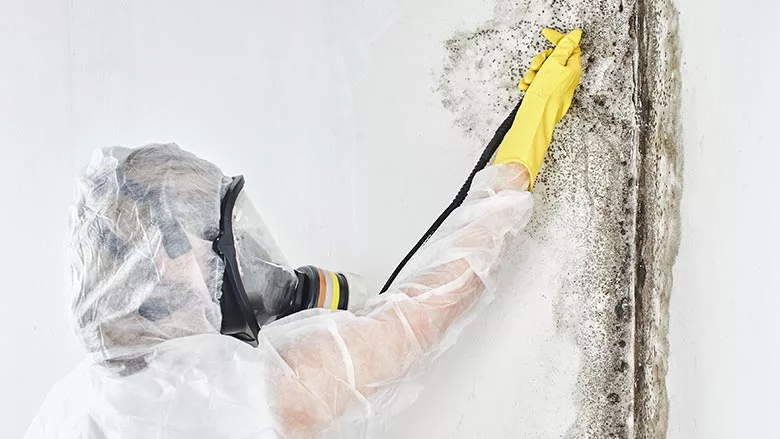Comprehensive Guide: Asbestos Testing and Safety Limits for Restoration Companies

Image: Bick Store, Generated with AI
Asbestos is a hazardous material once widely used in construction for its fire-resistant and insulating properties. When disturbed, asbestos fibers can become airborne, posing serious health risks. Due to these risks, asbestos testing and abatement must follow stringent guidelines set by the Occupational Safety and Health Administration (OSHA) and the Environmental Protection Agency (EPA). Restoration companies, in particular, need to adhere to these standards to protect workers, residents, and themselves from legal consequences, including substantial fines.
Who Can Conduct Asbestos Testing?
Licensed and accredited asbestos inspectors or testing professionals must conduct asbestos testing. Both federal and state regulations mandate that individuals performing asbestos testing must have certification, typically obtained through a course recognized by the EPA or state asbestos programs. Inspectors are often affiliated with Licensed Asbestos Consultants and must follow protocols for sample collection, analysis, and reporting.
Key Requirements for Asbestos Testing Professionals:
- Training and Certification: Testing professionals must complete an accredited asbestos inspector training course and, in many states, obtain licensure from the state’s environmental or health department.
- Sample Collection and Analysis: Professionals collect samples in a way that minimizes disturbance and sends these to accredited labs to determine the asbestos content.
Restoration companies can contract these testing professionals through Licensed Asbestos Consultants or they may choose to directly employ certified inspectors if state regulations allow. However, restorers should be aware of the potential for conflict of interest when performing asbestos sampling and offering restoration services.
Federal Asbestos Testing and Handling Requirements: OSHA and EPA Guidelines
OSHA Requirements for Asbestos Testing in the Workplace
For properties where restoration work may disturb asbestos, OSHA mandates that employers determine whether asbestos-containing materials (ACM) are present. OSHA standards apply to various industries, including construction (29 CFR 1926.1101) and general industry (29 CFR 1910.1001).
Key OSHA requirements include:
- Identification of ACM: Employers must inspect or assume the presence of asbestos in older buildings (typically pre-1980) and have any suspect materials tested by a certified professional before disturbance.
- Permissible Exposure Limits (PEL): OSHA has established an asbestos PEL of 0.1 fibers per cubic centimeter (f/cc) of air over an 8-hour time-weighted average (TWA) for both general and construction industries.
- Short-Term Exposure Limits (STEL): OSHA’s STEL for asbestos exposure is 1 f/cc averaged over a 30-minute period.
To comply with these standards, property restoration companies must perform exposure assessments and, if asbestos is identified, establish containment and control methods to keep fiber levels within OSHA’s permissible limits. Additionally, OSHA requires specific asbestos training and safe work practices.
EPA Regulations for Asbestos in Demolition and Renovation
The EPA regulates asbestos in demolitions and renovations under the National Emission Standards for Hazardous Air Pollutants (NESHAP). NESHAP requires that all structures, excluding single-family homes (unless part of a larger complex), be inspected for asbestos before demolition or major renovation activities.
Key EPA requirements include:
- Asbestos Inspection Requirement: All commercial buildings and residential buildings with four or more units must undergo an asbestos inspection by a certified professional before demolition or renovation.
- Notification: If asbestos is identified, property owners or contractors must notify the appropriate state agency before any demolition or abatement work.
- Disposal and Handling: Asbestos materials must be removed, packaged, and disposed of according to EPA regulations, ensuring no fibers are released into the environment.
Combined Material Testing and Permissible Exposure Limits (PEL)
OSHA and EPA guidelines require different approaches depending on the type of material involved and the combined potential for exposure in a given work area. Some materials, such as friable (easily crumbled) asbestos materials, are considered more hazardous due to the likelihood of fiber release.
- Individual Material Testing: Each distinct material suspected of containing asbestos should be tested individually, as the percentage and type of asbestos (e.g., chrysotile, amosite) may vary.
- Combined Material PEL Compliance: OSHA mandates that employers control the combined fiber levels in any work environment to remain at or below 0.1 f/cc (8-hour TWA) during abatement or restoration. This requires accurate testing and monitoring for each material, especially in environments where multiple asbestos-containing materials are present.
State-Specific Asbestos Testing and Certification Requirements
In addition to federal standards, most states have unique requirements for asbestos testing, certification, and abatement. Restoration companies should be familiar with these local requirements to avoid potential fines. State-specific guidelines often include:
- Certification and Licensing: States typically require asbestos professionals to hold state-specific certification, and some may require restoration companies to have licensed asbestos supervisors on-site.
- Permits and Notifications: Several states require additional permits for asbestos abatement, and some mandate extra notifications for projects involving ACM, especially in large commercial or multi-family residential buildings.
- Monitoring and Air Quality Sampling: States like California and New York have strict air sampling and monitoring protocols during and after asbestos abatement to ensure PEL levels are met.
Fines and Penalties for Non-Compliance
Violating asbestos regulations can lead to significant fines, especially if the violations are deemed willful or repeated.
- OSHA Penalties: For serious violations, OSHA fines start at $15,625 per violation, with willful or repeated offenses reaching up to $156,259. OSHA may impose these penalties for failing to identify asbestos, lack of proper air monitoring, or failure to follow exposure limits.
- EPA Penalties: Civil fines for EPA violations under NESHAP can be as high as $37,500 per day per violation. In severe cases, criminal penalties, including prison time, may apply if there’s intentional disregard for public safety.
- State Penalties: States may impose their own fines, often ranging from thousands to tens of thousands of dollars per violation. State penalties may also include suspension of contractor licenses, project shutdowns, or mandatory corrective actions.
Best Practices for Property Restoration Companies
To ensure compliance and avoid fines, restoration companies should follow these best practices:
- Engage Certified Professionals for Asbestos Testing: Only licensed asbestos inspectors should conduct asbestos testing.
- Conduct Comprehensive Testing: Test all suspect materials individually before any renovation or demolition work.
- Monitor Air Quality and PEL Compliance: Abatement companies should utilize air sampling and monitoring during abatement activities to ensure PEL levels stay within OSHA’s permissible limits.
- Stay Updated on State Regulations: Check for any additional state or local requirements that may impact your project.
- Proper Handling and Disposal: Adhere to EPA and state-specific handling and disposal guidelines for asbestos materials.
Remaining compliant with both federal and state asbestos regulations is essential for property restoration companies to ensure worker and public safety while avoiding costly fines and legal consequences.
Looking for a reprint of this article?
From high-res PDFs to custom plaques, order your copy today!








